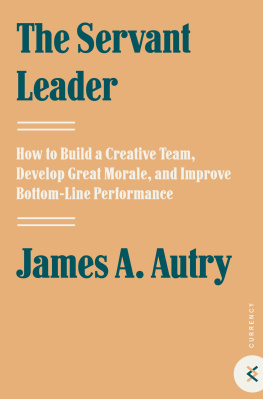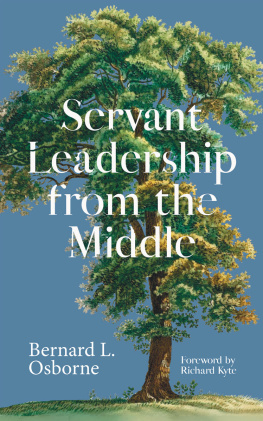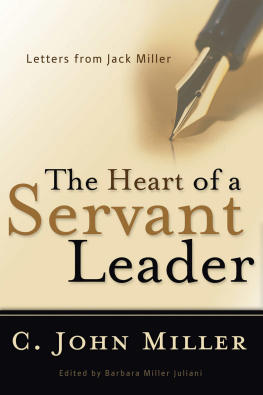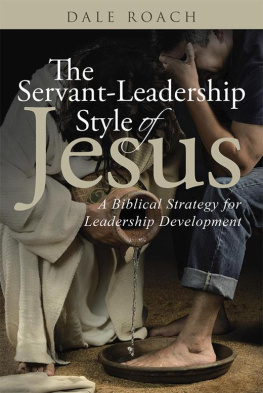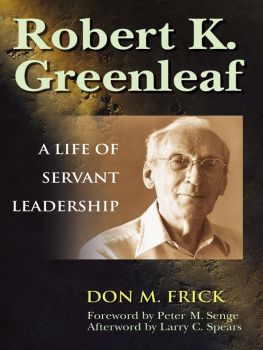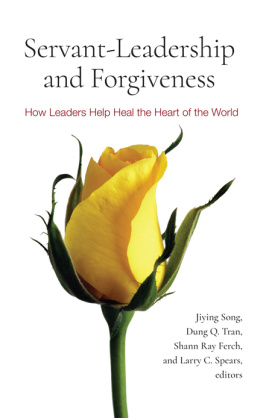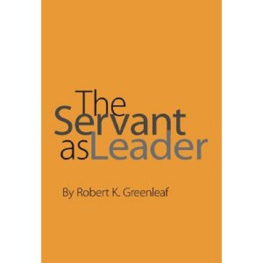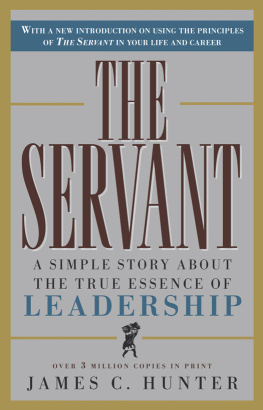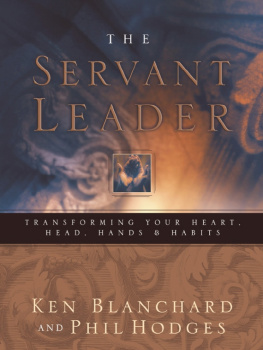Contents
Landmarks
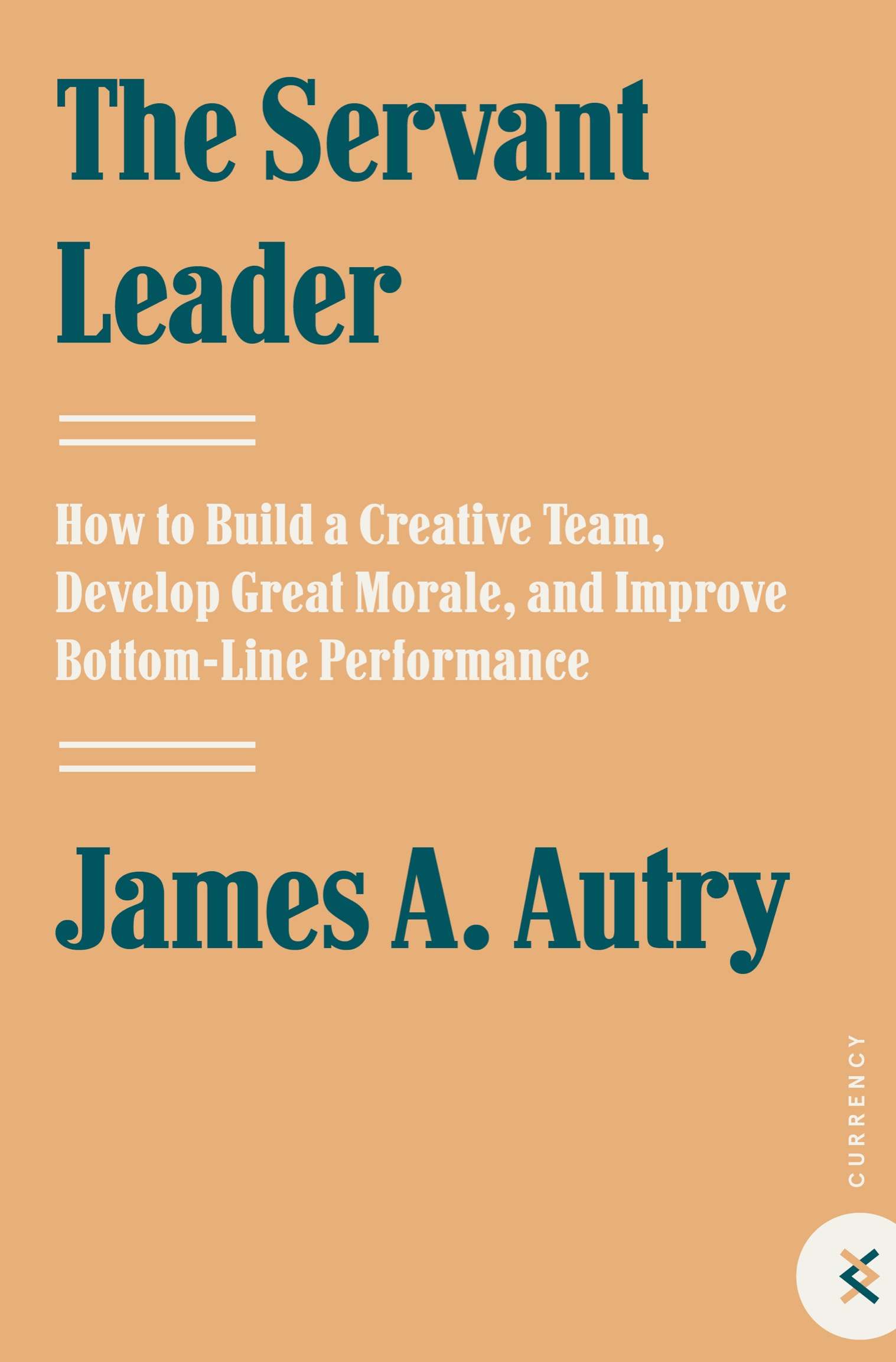
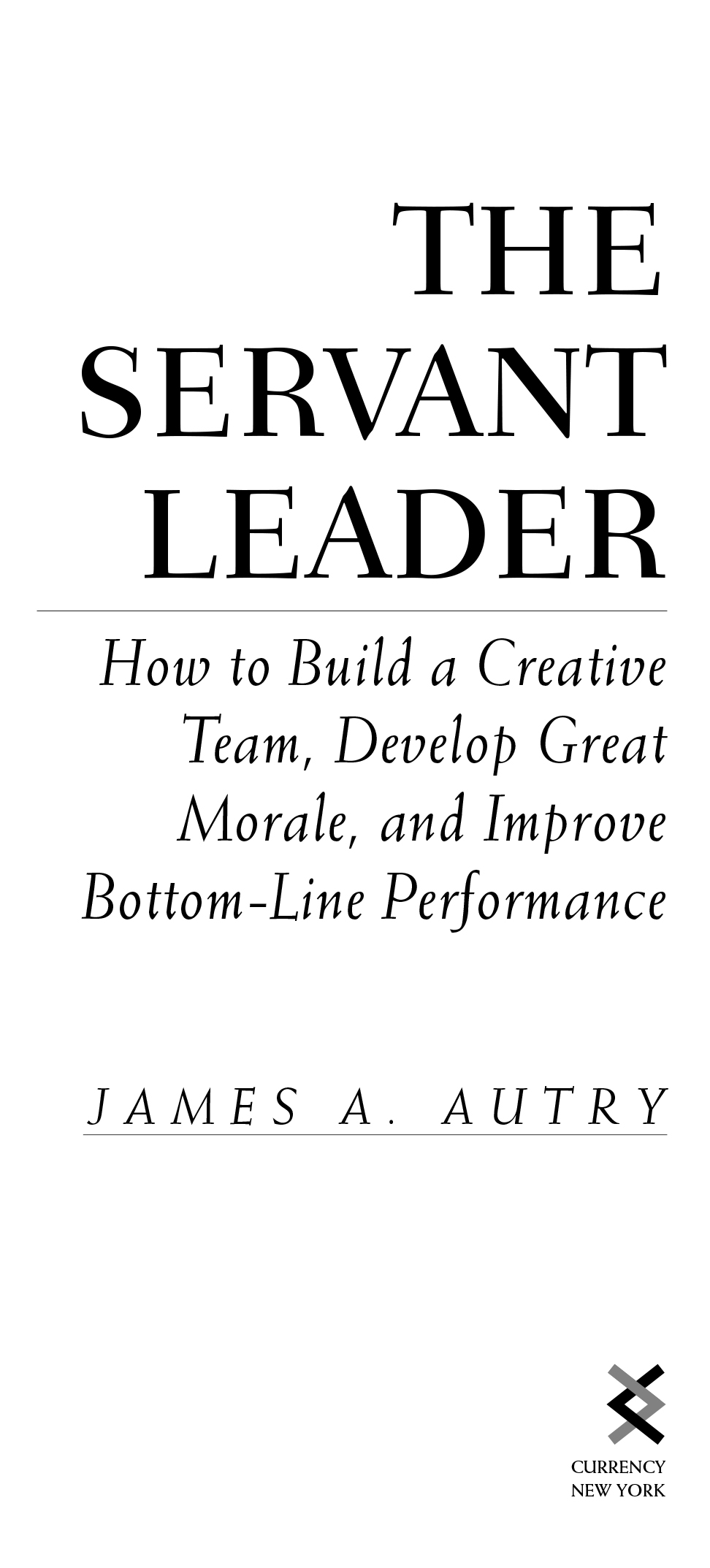
Table of Contents
To Lieutenant Governor Sally Pederson of Iowa,
who is not only the most caring servant leader
I know but also my best friend and my wife.
Praise for The Servant Leader
Servant leadership is key to surviving and thriving in the twenty-first century. Let both Jim Autry and his book The Servant Leader be your guide.
KEN BLANCHARD, COAUTHOR OF The One Minute Manager
The Servant Leader describes the kind of leadership upon which Starbucks Coffee Company has been built, and is a concept that is closely aligned with our mission and guiding principles. Starbucks partners (employees) are focused on being of service to each other, the communities where they operate, and to each customer one cup at a time.
HOWARD SCHULTZ, CHAIRMAN, STARBUCKS
The Servant Leader illuminates a clear path to personal, spiritual, and material actualization, which, in return, creates an infinite circle of prosperity.
TOM GOULD, RETIRED CHAIRMAN ANDCEO, YOUNKERS, INC.
Quite simply, this is an extraordinary book. For those yet unfamiliar with the principles and concepts of servant leadership, The Servant Leader will provide the ideal introduction. For those who have been working with and trying to promote servant leadership in their own organizations, it will very quickly become their ultimate book of reference. From principles and practicalities, it is a classic already and the first truly great leadership book of the new century.
JOHN NOBLE, DIRECTOR, GREENLEAF CENTER, UK
With a business environment where increasing change is the only constant, Jim Autry, one of the true pioneers in leadership, offers through The Servant Leader an abundant buffet of insightful, practical suggestions on how to heartfully create better business results. TheServant Leader is really the best field guide Ive seen for helping managers transform themselves into true leaders.
DOUG GREENE, CEO, NEW HOPE GROUP
A much needed addition to the servant leadership movement!
JAMES C. HUNTER, AUTHOR OF The Worlds Most Powerful Leadership Principle AND The Servant
Jim Autry continues to chronicle the leader journey in clear, wise, and witty prose and poems. I love his dedication and vivid expression of the essential character and skills of todays leaders. He is telling the truthI urge you to listen to him.
MARGARET J. WHEATLEY, AUTHOR OF Leadership and the New Science
Jim Autry combines a deep compassion for the human condition and a yearning for people to live the richest personal and professional lives, with a rigorous and logical approach to optimizing business performance. His courage in broaching the issues which get in the way of the latter but which can so easily be dismissed as non-business or touchy-feely issues are a true integration of spiritual and business matters.
MATT HANDBURY, EXECUTIVE CHAIRMAN, MURDOCH MAGAZINES
Acknowledgments
IF ANYONE DESERVES the lions share of credit for the creation of this book it is my editor, Alice Feinstein. She virtually talked me into writing it, a rare thing indeed in the concourse between editor and author. From her initial e-mail and subsequent phone calls has developed one of the most satisfying professional relationships of my career. So I thank her for that as well as specifically for this book.
I cant name all the people who have been important to my journey as businessman, author, and consultant, thus to the writing of The Servant Leader, so Ill just say that I have been blessed with role models and mentors and teachers and friends throughout my several careers. And in a way, everything I write has been borne of those relationships.
Foreword
by Howard Behar
I AM SINCERELY GRATEFUL to have been asked to share my thoughts about The Servant Leader. From the first time I encountered his work, Jim Autrys writing has helped to crystallize and give voice to many of the leadership principles that instinctively felt like the right thing to do, but I hadnt yet found a way to articulate.
Nearly thirty years ago, I was introduced to the concept of servant leadership through Robert Greenleafs pamphlet on the subject. I pored over the text again and again to glean the information I needed to truly become a better leader in my heart and my daily life. It was Jim Autry who eventually brought the information to life for me and many others.
When I first read Jims work, I was thrilled. Finally, someone had clearly and concisely articulated these principles in a way that people can quickly adopt into their lives. The impact is hugewhen hundreds of people in an organization are participating in a change process, they need to be able to quickly absorb the basic concepts and get down to the business of making it real. Ive seen it happen.
Since 1989, Ive had the great pleasure, frustration, joy, and challenge of being part of the Starbucks organization. When I joined Starbucks, the company had just expanded from Seattle (our hometown) to Chicago, and it was a huge stretch. No one was sure that the concept would work outside the Pacific Northwest. We were feverishly working to bring the Starbucks Experience to people across the country. Everyone at Starbucks, including Chairman Howard Schultz and I, had lots of intense, soul-searching, and sometimes animated (read: loud!) conversations about how we could nurture the company and continue to grow. We argued over everything from the color of the napkins to offering non-fat milk to our customers.
But we never had a disagreement about our principles, our values, and our mission as an organization. We had high aspirations, but they werent just about making money. Sure, you have to make a profit to keep your business going and its nice to live a comfortable life, but that cant be the primary objective. There has to be some driving spirit behind your work, something that makes it authentic to everyone involved. In the early days of Starbucks we articulated our ideals in our Mission Statement and Guiding Principles. We remain passionately committed to those principles. Partners (Starbucks employees) are exposed to our ideals in the interview process and throughout their careersthey dominate our decision making and daily work. And now, many years after those early conversations, Starbucks is a global organization which has enjoyed tremendous success on a variety of fronts. And we believe that the best is yet to come.
The pathway of Starbucks phenomenal achievement has been full of twists and hurdles, some of which were unwittingly created by the very partners who were working so hard to make us successful! I retired from Starbucks in 1999, and was enjoying the good lifeno meetings, no deadlinesit was great. But in 2001 there was a change in the leadership in our Retail North America business unit, and Starbucks President and Chief Executive Officer Orin Smith asked me to come back to work on an interim basis as president of the business unit.
Orin had noticed something different at Starbucks. The passion and values were still there, but sometimes we spent more energy on our individual or department goals than focusing on the greater good. Not just what we could do within the four walls of our offices or stores, but the greater good that our now-expansive organization was bringing to the worldhow we could serve each other and people around the globe. From an outsiders perspective, there was nothing to complain about: the companys financial achievements, growth and innovation were chugging ahead full steam, and partners devoted near-obsessive attention to quality and ethics. (Starbucks partners are some of the most caring and highly motivated people youll ever meet.) But could we sustain our success for the next 10, 20, 50 years without taking a hard look at our leadership practices? We didnt think so.

